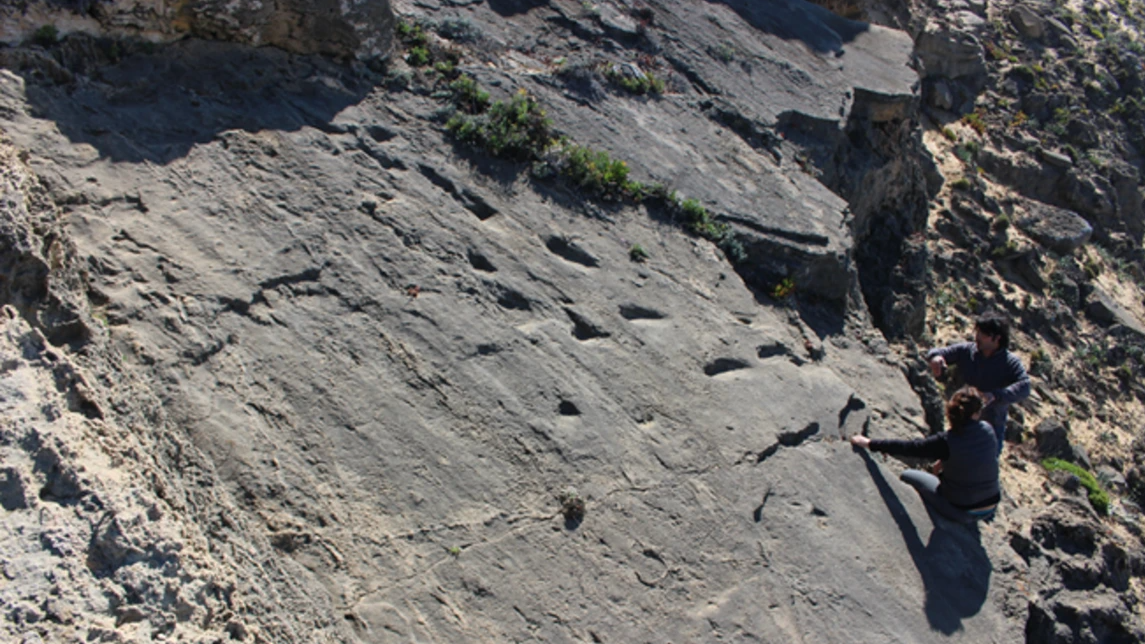Now Reading: **78,000-Year-Old Neanderthal Footprints Found on Portuguese Beach**
-
01
**78,000-Year-Old Neanderthal Footprints Found on Portuguese Beach**
**78,000-Year-Old Neanderthal Footprints Found on Portuguese Beach**

Speedy Summary
- Discovery: Researchers Carlos Neto de Carvalho and Yilu Zhang identified ancient Neanderthal footprints on Monte Clérigo beach in southern Portugal during March 2020.
- Findings: The site contained five trackways totaling 26 footprints, dated between 83,000 to 73,000 years ago using Optically Stimulated Luminescence dating. Another single footprint was found at Praia do Telheiro in the region.
- Footprints Characteristics: At Monte Clérigo, tracks included those of an adult male Neanderthal, a child (7-9 years old), and a toddler (under two years old).
- Activities inferred:
– Tracks suggest day-to-day activities involving children alongside adults.
– Movement patterns indicate potential foraging for shellfish or ambush hunting of mammals like horses,deer,or hares.
- Significance: These footprints are extremely rare-only eight sets of Neanderthal trackways have been discovered in europe so far.
!Depth & Dimensional Map Models of Footprints
Indian Opinion Analysis
This discovery offers profound insights into human evolution and the behaviour of Neanderthals-the closest extinct relatives to modern humans. While geographically distant from India, such findings enrich global understanding of early hominins’ social dynamics and survival strategies.
for India, known for its important contributions to paleoanthropology through discoveries like the Narmada Man fossil and Hathnora site tools linked to Homo erectus or early Homo sapiens populations-the study underscores the importance of preserving archaeological sites. The rarity of intact footprints highlights the need for meticulous scientific analysis before environmental conditions deteriorate such valuable records.
Furthermore, India’s ongoing demographic research on migration patterns can align with findings like these globally to better understand how early humans adapted across different terrains. As studies grow around India’s prehistoric coastal habitats along with inter-regional exchanges within South Asia during ancient times-collaborations with global experts may enhance interdisciplinary breakthroughs in human history worldwide.





















